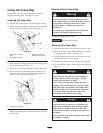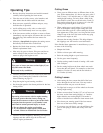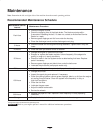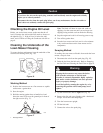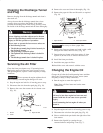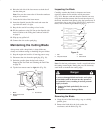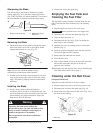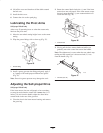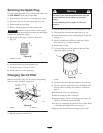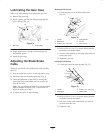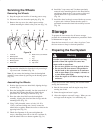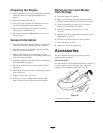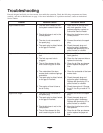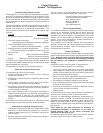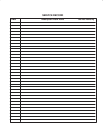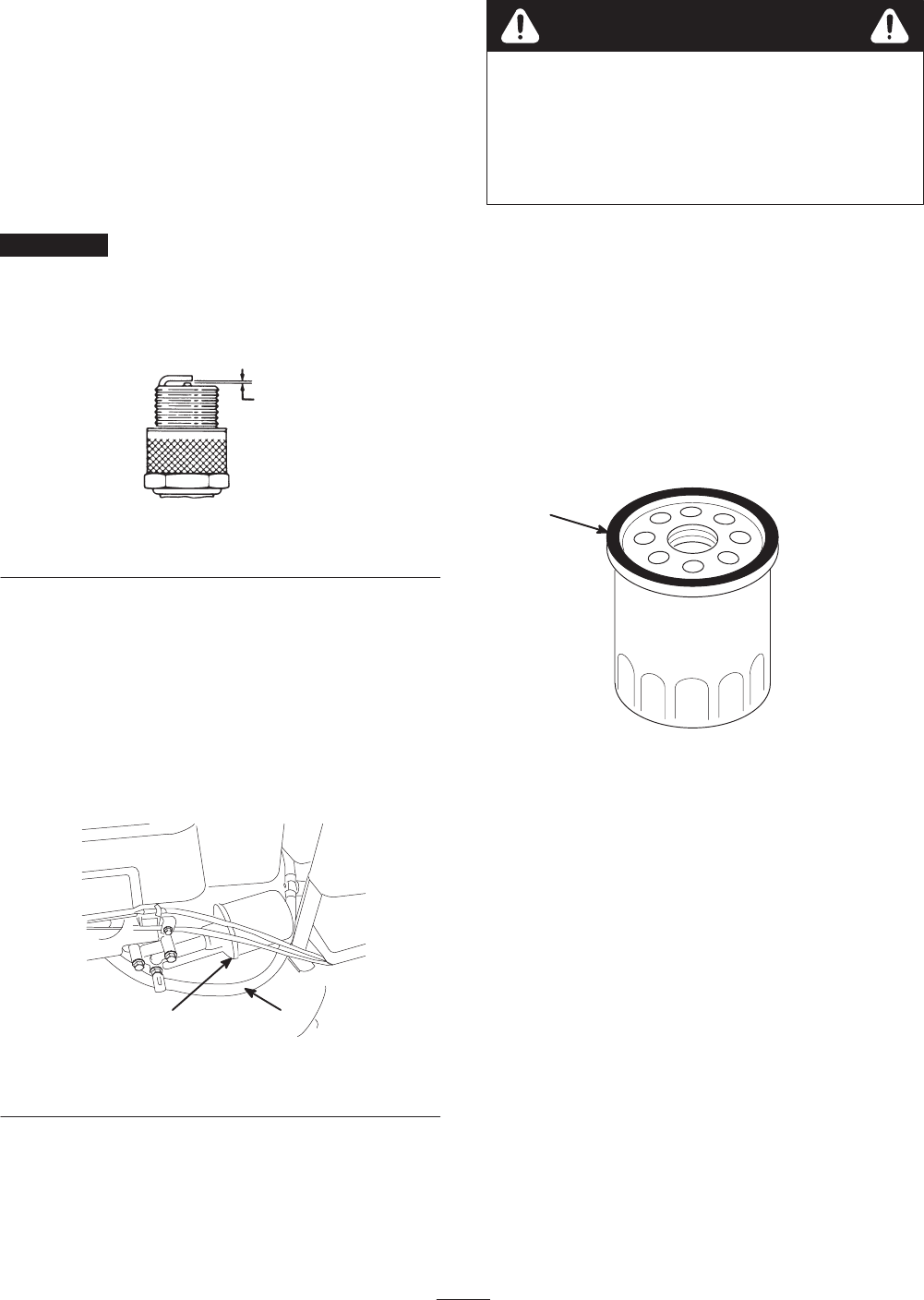
20
Servicing the Spark Plug
Check the spark plug after every 100 operating hours. Use
an NGK BPR5ES spark plug or equivalent.
1. Stop the engine and wait for all moving parts to stop.
2. Disconnect the wire from the spark plug (Fig. 10).
3. Clean around the spark plug.
4. Remove the spark plug from the cylinder head.
Important Replace a cracked, fouled, or dirty spark
plug. Do not clean the electrodes because grit entering the
cylinder can damage the engine.
5. Set the gap on the plug to 0.030 in. (0.76 mm)
(Fig. 28).
m-110
1
Figure 28
1. 0.030 in. (0.76 mm)
6. Install the spark plug and the gasket seal.
7. Torque the plug to 17 ft-lb (23 Nm).
8. Connect the wire to the spark plug.
Changing the Oil Filter
Replace the oil filter (Fig. 29) after every 100 operating
hours or yearly, whichever comes first.
m-7284
1 2
Figure 29
1. Oil filter 2. Fuel line
1. Run the engine to warm the oil.
Oil may be hot after the engine has been run, and
contact with hot oil can cause sever personal
injury.
Avoid contacting the hot engine oil when you
drain it.
Warning
2. Stop the engine and wait for all moving parts to stop.
3. Disconnect the wire from the spark plug (Fig. 10).
4. Drain the engine oil; refer to Changing the Engine Oil
on page 16.
5. Place a rag under the oil filter to catch any oil that
may leak out as you remove the filter.
6. Remove the oil filter.
7. Use your finger to coat the gasket on the new filter
with clean engine oil (Fig. 30).
mĆ3862
1
Figure 30
1. Gasket
8. Install the new filter and hand tighten it 2/3 turn only.
9. Fill the crankcase to the Full line on the dipstick with
fresh oil. Refer to Filling the Crankcase with Oil on
page 8.
10. Connect the wire to the spark plug.
11. Run the engine for about 3 minutes.
12. Stop the engine, wait for all moving parts to stop, and
check for oil leakage around the filter.
13. Add oil to compensate for the oil in the oil filter. Refer
to Checking the Engine Oil Level on page 15.
14. Recycle the used oil filter according to local codes.



